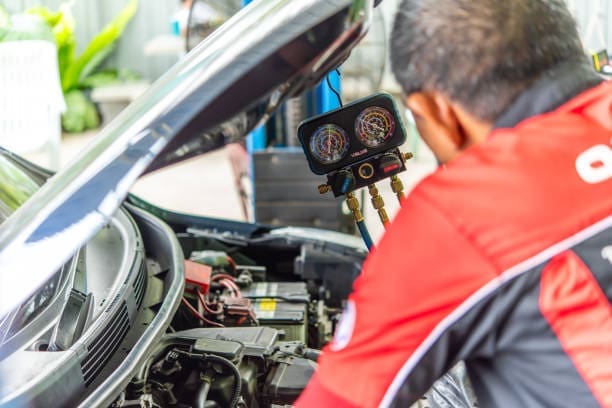How To Fix Odometer Rollback Car, one of the most concerning issues for buyers and sellers alike is odometer rollback. This fraudulent practice involves altering a vehicle’s odometer to display a lower mileage than it has traveled, often to increase the car’s resale value. Odometer rollback can lead to significant financial loss and safety concerns, making it crucial to address and prevent. This article will guide you through the steps to fix an odometer rollback car and avoid mileage discrepancies, ensuring transparency and safety in your vehicle transactions.
Understanding Odometer Rollback
Table of Contents
Toggle
What is Odometer Rollback?
Odometer rollback, also known as odometer tampering or clocking, is the illegal practice of rolling back the mileage on a vehicle’s odometer. This deceitful action is typically undertaken to make the car appear less used and more valuable than it is, thereby inflating its market price.
Why is Odometer Rollback a Problem?
Odometer rollback can lead to several issues, including:
- Financial Loss: Buyers may pay more for a car that appears to have low mileage but has higher wear and tear.
- Safety Concerns: Higher mileage vehicles often require more maintenance and repairs. Misleading information can lead to overlooked maintenance, resulting in unsafe driving conditions.
- Legal Issues: Odometer tampering is illegal in many regions and can result in severe penalties for both sellers and buyers who knowingly participate.
Identifying Odometer Rollback
Signs of Odometer Tampering
To fix an odometer rollback issue, you first need to identify if tampering has occurred. Here are some common signs:
- Inconsistent Wear and Tear: Compare the car’s condition with the mileage displayed. Excessive wear on the seats, pedals, and steering wheel may indicate higher usage than the odometer suggests.
- Unusual Service Records: Check the vehicle’s service history for inconsistencies in recorded mileage. Sudden drops or irregular patterns can be red flags.
- Physical Inspection of Odometer: For older vehicles with mechanical odometers, look for misaligned numbers or scratches on the dial, which may indicate tampering.
Using Diagnostic Tools
Modern vehicles often store mileage data in multiple electronic control units (ECUs). Using diagnostic tools, mechanics can compare the odometer reading with data stored in these units to detect discrepancies.
Steps to Fix an Odometer Rollback Car
Step 1: Verify and Document the Issue
Before taking any corrective action, it’s essential to thoroughly document the mileage discrepancy:
- Gather Evidence: Collect all available service records, previous sale documents, and any other paperwork indicating the car’s true mileage.
- Get a Professional Inspection: Have a certified mechanic or specialist verify the mileage discrepancy using diagnostic tools and inspection methods.
Step 2: Report the Fraud
If you’ve confirmed that odometer rollback has occurred, it’s important to report it:
- Contact Authorities: Report the fraud to local law enforcement and relevant regulatory bodies (such as the Department of Motor Vehicles or equivalent).
- Notify the Seller: Inform the seller about the discovered tampering. If the seller is a dealership, they may take corrective actions or offer compensation.
Step 3: Correct the Odometer Reading
Correcting the odometer reading should be done by a professional to ensure accuracy and compliance with legal requirements:
- Hire a Certified Technician: Find a technician or service center that specializes in odometer repairs and has the necessary certifications.
- Calibrate the Odometer: The technician will reset the odometer to reflect the accurate mileage, often using manufacturer-approved tools and methods.
Step 4: Update Documentation
After correcting the odometer reading, update all related documents to reflect the accurate mileage:
- Update Service Records: Ensure that the vehicle’s service history accurately reflects the corrected mileage.
- Notify the DMV: Inform the Department of Motor Vehicles (or equivalent) about the odometer correction and provide necessary documentation.
- Inform Future Buyers: When selling the car, disclose the odometer correction and provide evidence of the previous tampering and the steps taken to fix it.
Preventing Mileage Discrepancy
Buyers: How to Avoid Buying a Rolled-Back Car
- Conduct Thorough Research: Investigate the vehicle’s history using services like Carfax or AutoCheck. These reports often include mileage records from previous owners, inspections, and services.
- Inspect the Car Thoroughly: Look for signs of wear that don’t match the reported mileage. Have a trusted mechanic inspect the vehicle before purchase.
- Check for Tamper-Proof Features: Some modern cars come with tamper-proof odometers or store mileage data in multiple electronic systems, making tampering more difficult to conceal.
Sellers: How to Maintain Mileage Integrity
- Keep Detailed Records: Maintain comprehensive service and maintenance records, including mileage at each service. This helps build trust with potential buyers.
- Use Authorized Service Centers: Have your vehicle serviced at authorized dealerships or reputable service centers that accurately record and report mileage.
- Disclose All Information: Be transparent about the vehicle’s history, including any odometer repairs or replacements.
Legal Aspects of Odometer Rollback

Laws and Regulations
Odometer tampering is illegal in many countries, with severe penalties for those found guilty:
- United States: The Federal Odometer Act makes it illegal to disconnect, reset, or alter a vehicle’s odometer with intent to change the number of miles indicated. Penalties can include fines and imprisonment.
- European Union: Similar regulations exist, with penalties varying by country but often including fines and imprisonment.
- Other Regions: Many other countries have laws against odometer tampering, reflecting the global consensus on the importance of accurate mileage reporting.
Legal Recourse for Victims
If you’ve been a victim of odometer rollback, you may have legal options:
- Civil Lawsuits: Victims can sue the seller for damages, including the cost of the vehicle, repairs, and legal fees.
- Criminal Charges: Authorities can press criminal charges against individuals or businesses involved in odometer tampering.
Case Studies: Real-World Examples
Case Study 1: The Used Car Scam
A buyer in the United States purchased a used luxury sedan with low mileage from a private seller. After experiencing multiple mechanical issues, the buyer investigated the car’s history and discovered significant discrepancies in the mileage records. The buyer reported the fraud to the authorities, who found that the seller had rolled back the odometer by over 50,000 miles. The seller was prosecuted, and the buyer received compensation through a civil lawsuit.
Case Study 2: The Dealership Dilemma
A well-known dealership in Europe faced allegations of selling cars with tampered odometers. After a thorough investigation, it was revealed that several vehicles had undergone mileage rollback. The dealership faced heavy fines and legal actions, and several victims received compensation for their losses. The incident led to stricter regulations and enforcement in the region.
Conclusion
Odometer rollback is a serious issue that can lead to financial loss, safety concerns, and legal troubles. Identifying and fixing a car with an altered odometer requires diligence, professional assistance, and adherence to legal procedures. By understanding the signs of odometer tampering, taking appropriate steps to correct discrepancies, and maintaining transparency in vehicle transactions, you can protect yourself from fraud and ensure a safer, more trustworthy automotive market.
Whether you’re a buyer or a seller, prioritizing accurate mileage reporting and thorough documentation is key to preventing and addressing odometer rollback. By following the guidelines outlined in this article, you can navigate the complexities of mileage discrepancies and contribute to a fair and transparent automotive industry.



